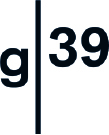Radiographic
17 April - 22 May 2004

Calum Stirling, Tectonic Plates
Radiographic applies the same approach to creating and discussing audio as we would image. Following this line of inquiry, the medium of radio has the propensity to a very particular aesthetic, from the woolly quality of the medium, long-wave frequencies to the hyper real production values of current pop. Specific stations have a particular aesthetic too, from BBC Radio 1’s throwaway immediacy to the steady dulcet lullaby of Radio 4’s information relay. This aural aesthetic is the basis of Radiographic, though this is by no means a purely aural exhibition. Rather it aims to explore the crossovers, parallels and happy coincidences between the aural and the visual.
Entering the gallery, the viewer is aware of a threatening low rumbling emanating from the cellar hatch. From Below by Dave Handford is an oppressive environment that uses sonic physics to evoke the experience of being confined in a deep-sea bathysphere. An oscilloscope displays the waveform of the subsonic frequencies as they vibrate the underground space. The piece comprises the artist’s recital of Xenobathite Song, together with analogue electronic Sonics. Xenobathite Song was written by John Wyndham, and is taken from his 1953 story The Kraken Wakes. Wyndham’s work was rooted in the Cold War paranoia of the 1950s and often dealt with creeping, unknown terrors and fears lurking above, below and around us. This was the same era that War of the Worlds used radio to thrill and entertain a nation of listeners, and is when the BBC Radio phonic Workshop was first developed, which Handford’s work also references. His work continues this tradition of sound engineering, using an alchemist’s approach to construct abstract organised works that manipulate sound in all its forms.
On the ground floor, Matt Cook’s Sound City is constructed by manipulating audiotape and cassette player mechanisms, and partly with audio samples sourced from the urban landscape recorded on the tape. Following predestined routes, loops of audiotape traverse the city, producing repetitive sounds while in motion. As the tape loops stretch and degenerate over time, the sound quality gradually deteriorates and the whole piece eventually shakes itself apart. Cook is primarily concerned with sound and rhythmic structures and cycles, specifically those we create in our lives that mimic natural rhythm of the world and the artificial rhythm of the city.
Calum Stirling’s Tectonic Plates on the first floor takes us on a very different journey into the micro-geography of a vinyl record groove. The 3-minute video depicts a custom-made vinyl flexi disk rotating at half a revolution per minute from the view of a stylus. The video traverses an eerie route through a valley landscape that is at once convincing and oddly artificial. The soundtrack to this strange imagery is the low rumbling of the stylus against the groove’s walls. Stirling produced this version of Tectonic Plates from a computer-generated model of the groove’s terrain using an ultra high scan of three revolutions of the record surface.
On the top floor Jem Finer’s piece Space Station listens to the music of the skies. Various recordings of different extraterrestrial radio sources, among them meteor bursts, solar flares, pulsars, broadcasts from Jupiter, make up a juke box-style play list that also includes songs and music selected according to their titles’ reference to space and the universe. Without human interference Space Station randomly selects from these tracks and plays them back alongside a background of found film footage and stills, which in turn is affected according to an analysis of the frequencies and amplitudes within the celestial mix.
In radio astronomy the aural can be seen to meet the graphic. RF (radio frequency) radiation induces a very weak electric current in an antenna. For the purposes of interpreting this data radio, astronomers convert it into the visual domain, mapping frequencies, their strength and location. Beaming down from all the corners of the universe are signals that have been continuously broadcasting for billions of years.
No jingles, no phone-ins, no traffic news, no personalities, no adverts, no competitions, no aesthetic. Or maybe there is, the aesthetic of raw data . . . ‘a steady hiss type static of unknown origin’ Karl Jansky 1931.
The artists in Radiographic share a fascination with the use of sound in art and the physicality of its transmission – audiotape, oscilloscopes, radio waves, vinyl grooves – although their references remain firmly rooted in the everyday sources of noise. They complete a wider picture and awareness in the role that the sonic has to play in our understanding of the world around us.
- The following Artists were in this show:
- Jem Finer
- David Handford
- Matt Cook
- Calum Stirling












